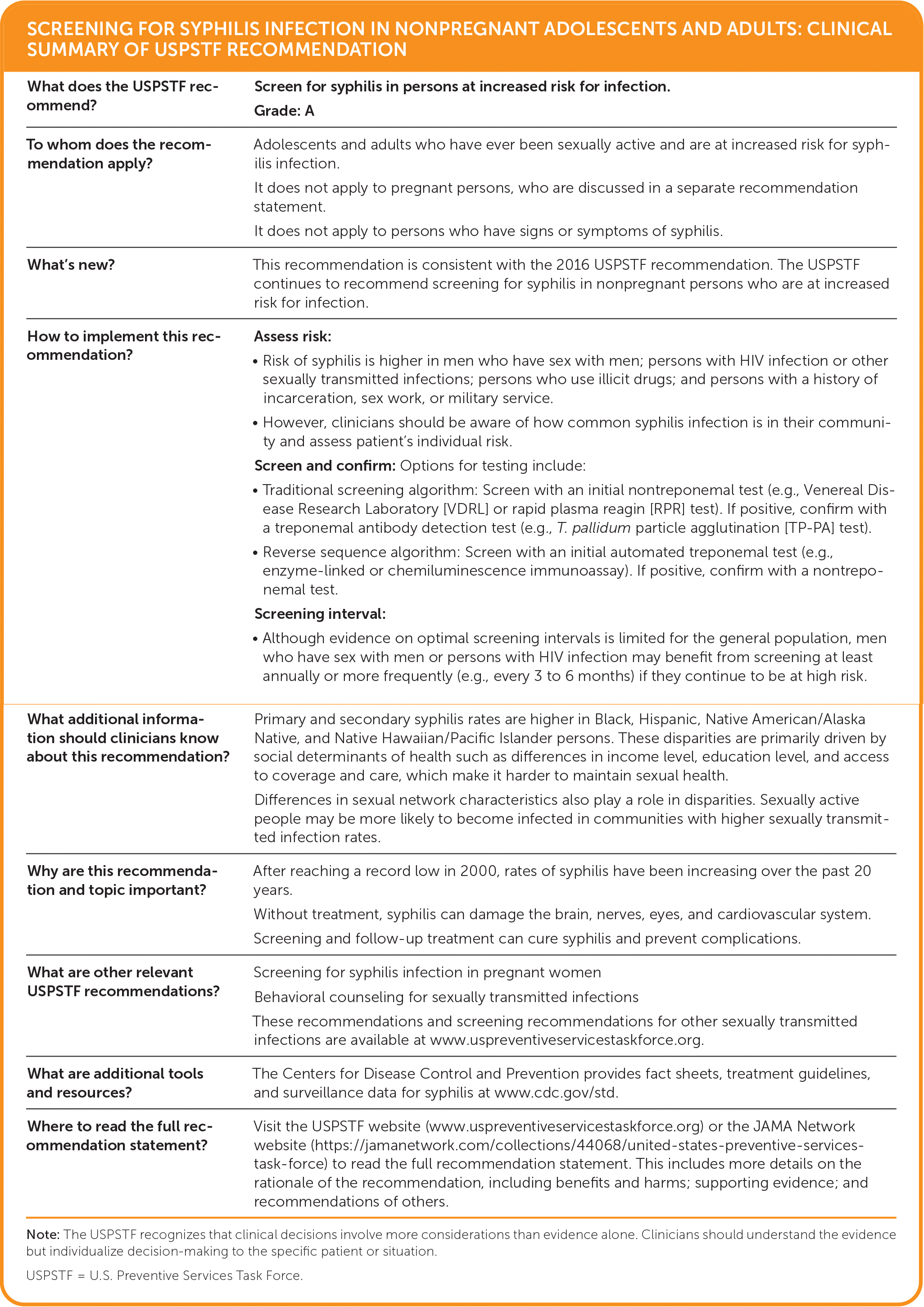
Am Fam Physician. 2024;109(1):online
Related Putting Prevention Into Practice: Screening for Syphilis in Nonpregnant Adolescents and Adults
As published by the USPSTF.

| What does the USPSTF recommend? | Screen for syphilis in persons at increased risk for infection. Grade: A |
| To whom does the recommendation apply? | Adolescents and adults who have ever been sexually active and are at increased risk for syphilis infection. It does not apply to pregnant persons, who are discussed in a separate recommendation statement. It does not apply to persons who have signs or symptoms of syphilis. |
| What's new? | This recommendation is consistent with the 2016 USPSTF recommendation. The USPSTF continues to recommend screening for syphilis in nonpregnant persons who are at increased risk for infection. |
| How to implement this recommendation? | Assess risk:
Screen and confirm: Options for testing include:
Screening interval:
|
| What additional information should clinicians know about this recommendation? | Primary and secondary syphilis rates are higher in Black, Hispanic, Native American/Alaska Native, and Native Hawaiian/Pacific Islander persons. These disparities are primarily driven by social determinants of health such as differences in income level, education level, and access to coverage and care, which make it harder to maintain sexual health. Differences in sexual network characteristics also play a role in disparities. Sexually active people may be more likely to become infected in communities with higher sexually transmitted infection rates. |
| Why are this recommendation and topic important? | After reaching a record low in 2000, rates of syphilis have been increasing over the past 20 years. Without treatment, syphilis can damage the brain, nerves, eyes, and cardiovascular system. Screening and follow-up treatment can cure syphilis and prevent complications. |
| What are other relevant USPSTF recommendations? | Screening for syphilis infection in pregnant women Behavioral counseling for sexually transmitted infections These recommendations and screening recommendations for other sexually transmitted infections are available at www.uspreventiveservicestaskforce.org. |
| What are additional tools and resources? | The Centers for Disease Control and Prevention provides fact sheets, treatment guidelines, and surveillance data for syphilis at www.cdc.gov/std. |
| Where to read the full recommendation statement? | Visit the USPSTF website (www.uspreventiveservicestaskforce.org) or the JAMA Network website (https://jamanetwork.com/collections/44068/united-states-preventive-services-task-force) to read the full recommendation statement. This includes more details on the rationale of the recommendation, including benefits and harms; supporting evidence; and recommendations of others. |
The full recommendation statement is available at https://www.uspreventiveservicestaskforce.org/uspstf/recommendation/syphilis-infection-nonpregnant-adults-adolescents-screening.
The USPSTF recommendations are independent of the U.S. government. They do not represent the views of the Agency for Healthcare Research and Quality, the U.S. Department of Health and Human Services, or the U.S. Public Health Service.
